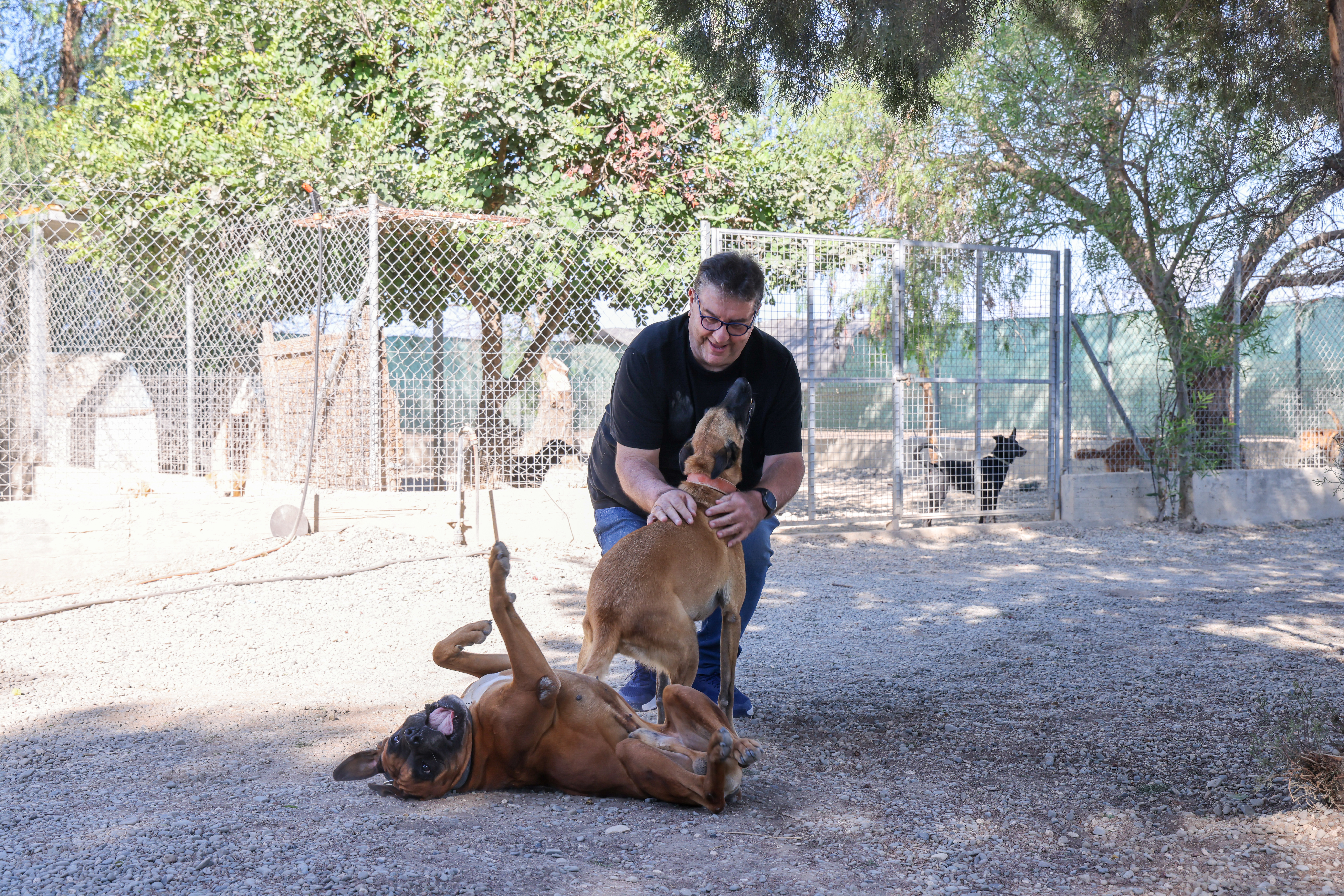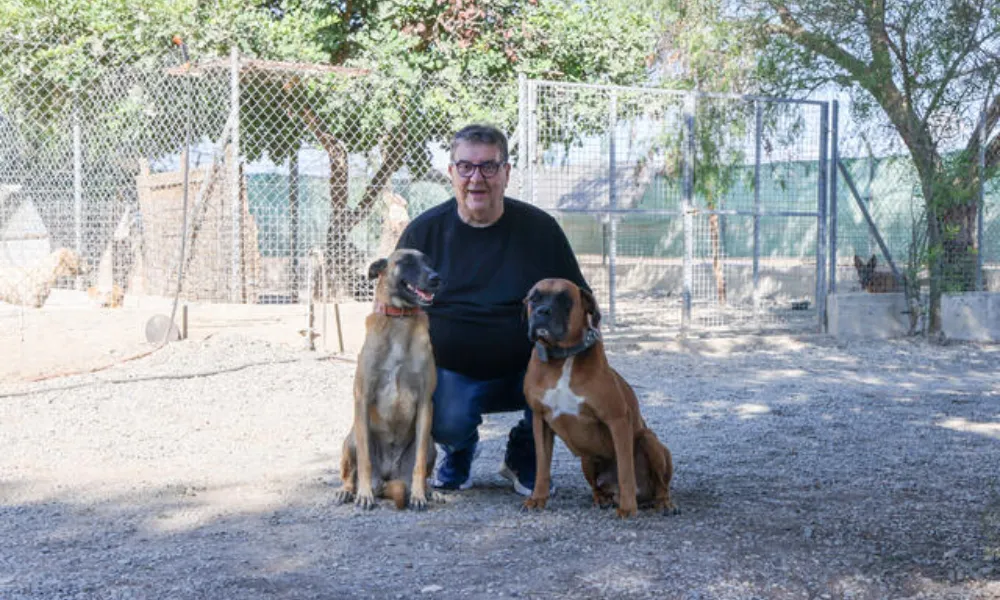By Eleni Papadopoulou
By a twist of timing, World Animal Day finds Michalis Papadakis, the municipal officer who led the collection and care of Nicosia’s stray dogs, days from retirement. When he started around 2005, there was no formal unit. The municipality created a fledgling service to organise animal collection, roll out microchipping and systematise pet-licensing. Until then, the small Kaimakli shelter held dogs for 15 days; if no owner or adopter came forward, animals were sent for euthanasia. Papadakis refused to accept that as routine, building ties with welfare groups and citizens to prioritise rehoming.
Early work ran on phone calls, emails and personal networks. Social media later became a crucial tool: through his profile, Papadakis pushed adoptions and mobilised help. Over time, routine euthanasia was dropped. “Since 2005, I believe I have collected and cared for over 3,000 dogs,” he says.

An unpredictable day’s work
A typical day began at the office assessing complaints -barking, neglect, abandonment- before shelter rounds for feeding, cleaning and walks. Call-outs followed to collect strays, usually handled without snares thanks to experience and calm handling. Dogs were scanned for microchips; without an owner, they moved into adoption pathways. “The day was always unpredictable,” he recalls. “I often worked late, used my personal phone, and stayed available 24/7, including holidays.”
The job brought harsh realities: abused dogs, animals chained without food, severe injuries. One emblematic case involved 14 dogs seized from a woman linked to an animal group; they were kept in squalor and poor health. The municipality covered treatment and, with UK-based organisations, placed all of them in homes.
A milestone came 13 years ago with the move to a larger, renovated municipal shelter in Kokkinotrimithia. It now houses 100+ dogs and is almost always full. Public awareness has grown, bringing faster reporting and tighter cooperation with Police, Fire Service and checkpoint units.
Changing mindsets is the hardest part
Collection was never the main challenge; behaviour change was. Sterilisation, microchipping compliance and responsible ownership remain the weak links. For years, uncontrolled breeding and abandonment fed the problem. The city introduced a rule: all dogs adopted from the shelter are sterilised, a measure now common across welfare groups and private or public shelters. Even so, Papadakis estimates only about 60% of owners act responsibly; others treat dogs as accessories or yield to children’s pleas, with neglect the predictable result.
Papadakis credits successive mayors for backing the service and funding upgrades. Equally, he points to citizens and rescue groups: without them, he says, the system would not have worked. “Even with resources, results depend on public participation and responsibility.”

Legacy, handover and what must come next
After nearly 20 years, two new staffers are stepping in. “It’s a role that gives moral satisfaction,” he says. “I believe we saved many dogs from death or harsh conditions.” He’s candid about limits“ some days we could have done more” but argues the path forward is clear: a national policy that leans into the two basics, mass sterilisation and strict microchipping enforcement, especially in rural communities where the problem is acute. His closing message is simple: “Nothing works with the municipality alone or an officer alone. It’s collaboration. And the biggest reward is seeing a dog find a home, and stop hurting.”
